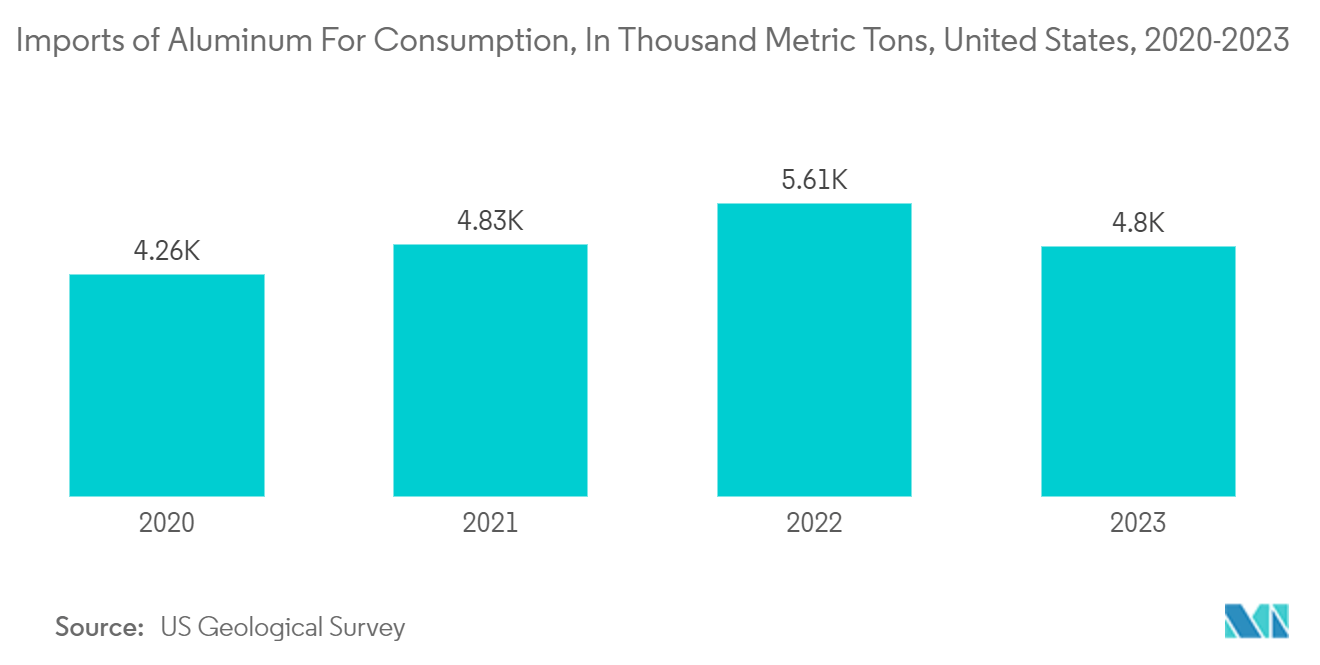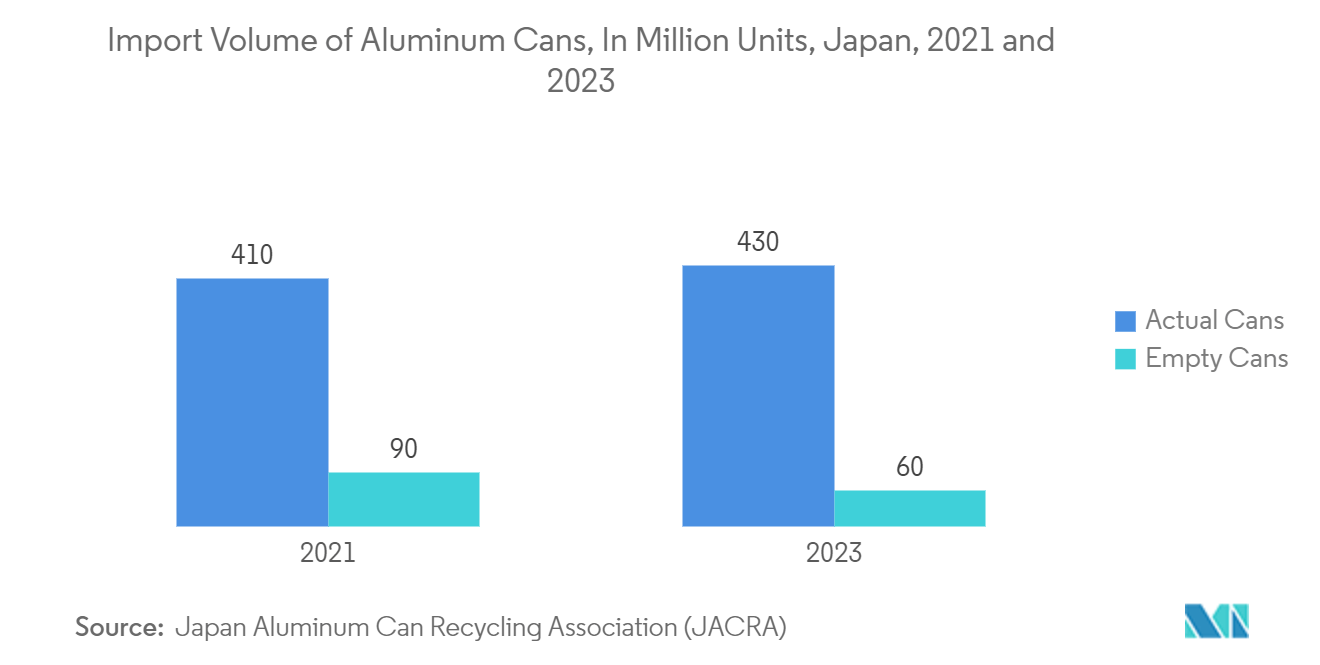Market Trends of Food Cans Industry
Aluminum Cans to Witness Highest Market Growth
- Aluminum cans deliver long-term food quality preservation advantages. These cans offer nearly 100% protection against light, oxygen, moisture, and other contaminants. They are rust and corrosion-resistant, providing extended shelf life. Aluminum has significant properties, such as being smoother and lighter, aiding manufacturers in saving logistics expenses.
- Aluminum cans are gaining significance due to various factors, such as stackability, light weight, strength, resistance to transportation, irregular handling, and easy recyclability, allowing brands to package and transport more using less material. According to the US Geological Survey, the imports of aluminum consumption in 2021 were 4,830 thousand metric tons, and they reached 4,800 thousand metric tons in 2023.
- One of the significant benefits of aluminum cans is that they are recyclable. Almost 100% of the aluminum used in the cans can be melted down and utilized too. These can be recycled at the end of their lifecycle, making them the preferred packaging type for brands across the food industry.
- According to a new study by the NYU School of Global Public Health researchers, the consumption of ultra-processed foods has risen over a couple of decades across nearly all segments of the US population. The composition of the average US diet has moved toward a more processed diet. This is concerning, as eating more ultra-processed foods is associated with inadequate diet quality and a higher risk of several chronic diseases. Ultra-processed foods are industrially manufactured, ready to eat or heat, include additives, and are mainly devoid of whole foods.
- The recyclability of product packaging is of increasing interest to consumers seeking more sustainable products. As a result, aluminum, which is touted as infinitely recyclable, is gaining traction among product manufacturers and the consumers they serve. Industries transitioning to aluminum include food packaging products. The move to aluminum is reflected in the expected growth of green packaging.

Asia-Pacific Expected to Register Fastest Growth
- The environmental advantages of metal cans and their easy and quick recycling, along with the growing demand for canned products, are anticipated to positively affect the market growth in the region. Increasing government restrictions on plastic packaging products for packing vegetables, noodles, meat, etc., are creating opportunities for market growth.
- Growing demand for the utilization of natural resources in the region has revved recycling activities and increased the reuse of metals in the Asia-Pacific. There are substantial variations in the recycling rate of aluminum cans across the countries in the region.
- Countries such as Japan import aluminum cans to the country, and according to the Japan Aluminum Cans Recycling Association (JACRA), in 2023, the actual cans imported were 430 million units, and empty cans were 60 million units, and imports increased from 410 actual cans and 90 empty cans in 2021.
- Increased urbanization, higher disposable incomes, the growth of nuclear families, and a preference for convenience goods are driving the demand for processed food products. Selling food in processed form allows one to charge a more significant price and capture a more considerable economic value. For instance, according to an estimation by the RBI, manufacturing prepared meals adds 30% value to the product, whereas processing meat adds 12.7%.
- According to the IBEF, India has significant potential to become a global processed food export powerhouse. It includes an affluent agricultural resource base, strategic geographic location and proximity to food-importing countries, and an expansive network of food processing training, academic, and research facilities. With a market size of USD 866 billion in 2022, the food industry was projected to be critical to the economy's growth. In 2023, the food market was expected to generate USD 963 billion in revenue.


